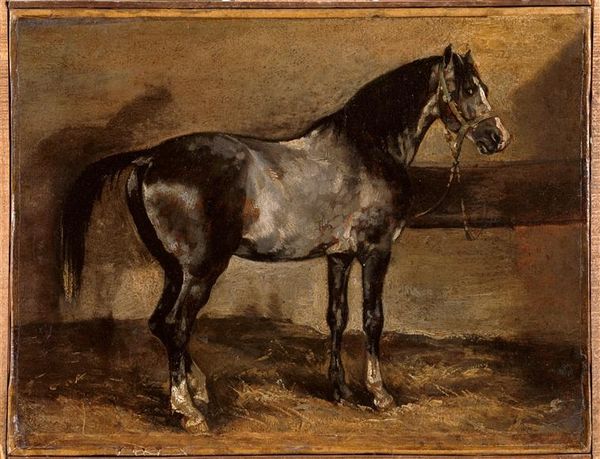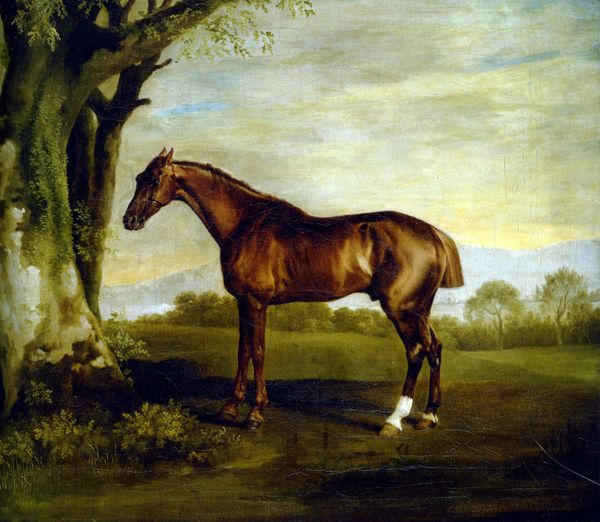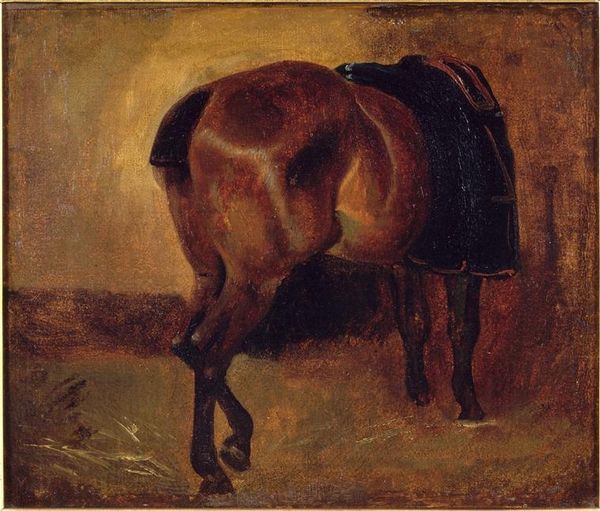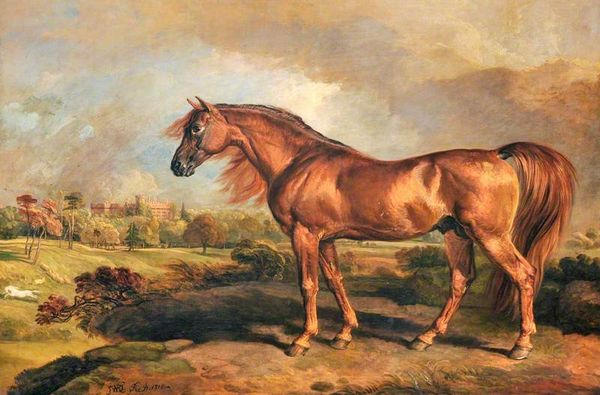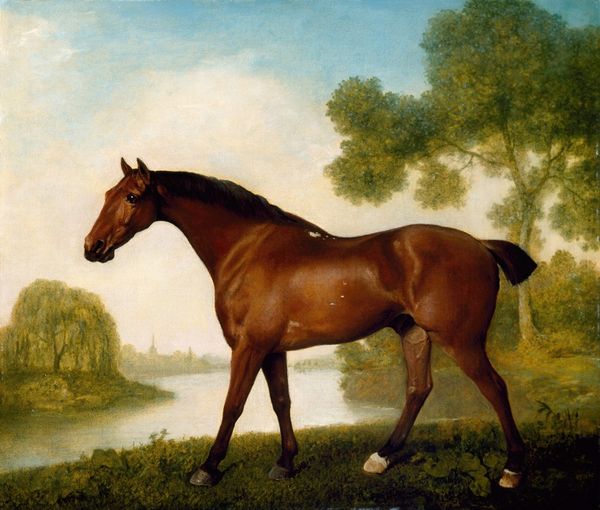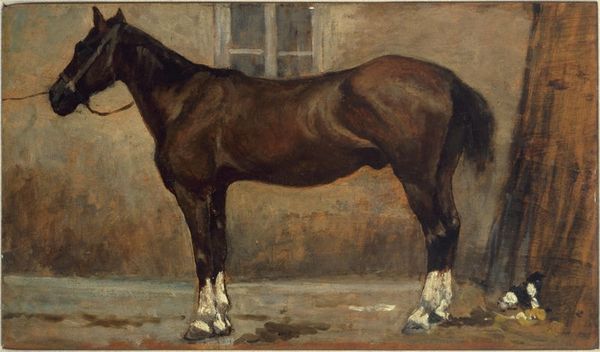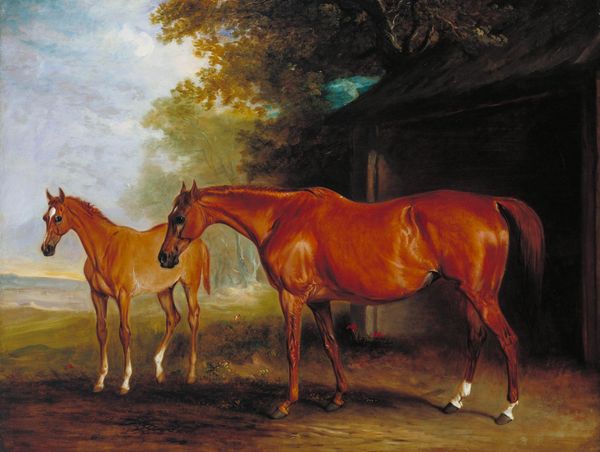
painting, oil-paint
#
portrait
#
animal
#
painting
#
oil-paint
#
landscape
#
oil painting
#
romanticism
#
animal portrait
#
horse
#
realism
Dimensions: 32.4 x 40.6 cm
Copyright: Public domain
Editor: We're looking at Gustave Courbet's "The English Horse of M. Duval," an oil painting held in a private collection. The brushwork is pretty gestural, and the brown tones create a kind of somber atmosphere. What strikes you about this piece? Curator: Well, I am drawn to Courbet's commitment to realism through the very materials he employed. Consider the thick impasto of the paint – it's not just descriptive but performative. This wasn't about idealizing the horse; it was about showing the brute physicality, almost labor of representation itself. Editor: Labor of representation? Curator: Exactly! The materiality directs us to think about what it took, physically and socially, to produce this image. Someone owned that horse; Courbet made the painting, and someone commissioned it. What’s absent in the image is the labor of the horse itself. What kind of horse is this, anyway? Editor: The title suggests an "English Horse"—likely a thoroughbred, bred for racing or sport. How would that factor in? Curator: It highlights the class dimensions. A thoroughbred speaks to leisure and capital. Think of the literal "horsepower" this animal represents versus its use for leisure, underlining economic power structures. Editor: So, the painting, even just through its materials and subject matter, is really about more than just a horse? Curator: Precisely. It prompts questions about ownership, production, and even the role of art itself as a commodity reflecting the values of its time. And look at the dark colors…are they an attempt to obscure labor relations that would not withstand scrutiny? Editor: I never considered the connection between the painting’s physicality and the socio-economic context. Thanks for that. Curator: Indeed, it's about seeing beyond the surface to understand how art operates within material conditions.
Comments
No comments
Be the first to comment and join the conversation on the ultimate creative platform.
